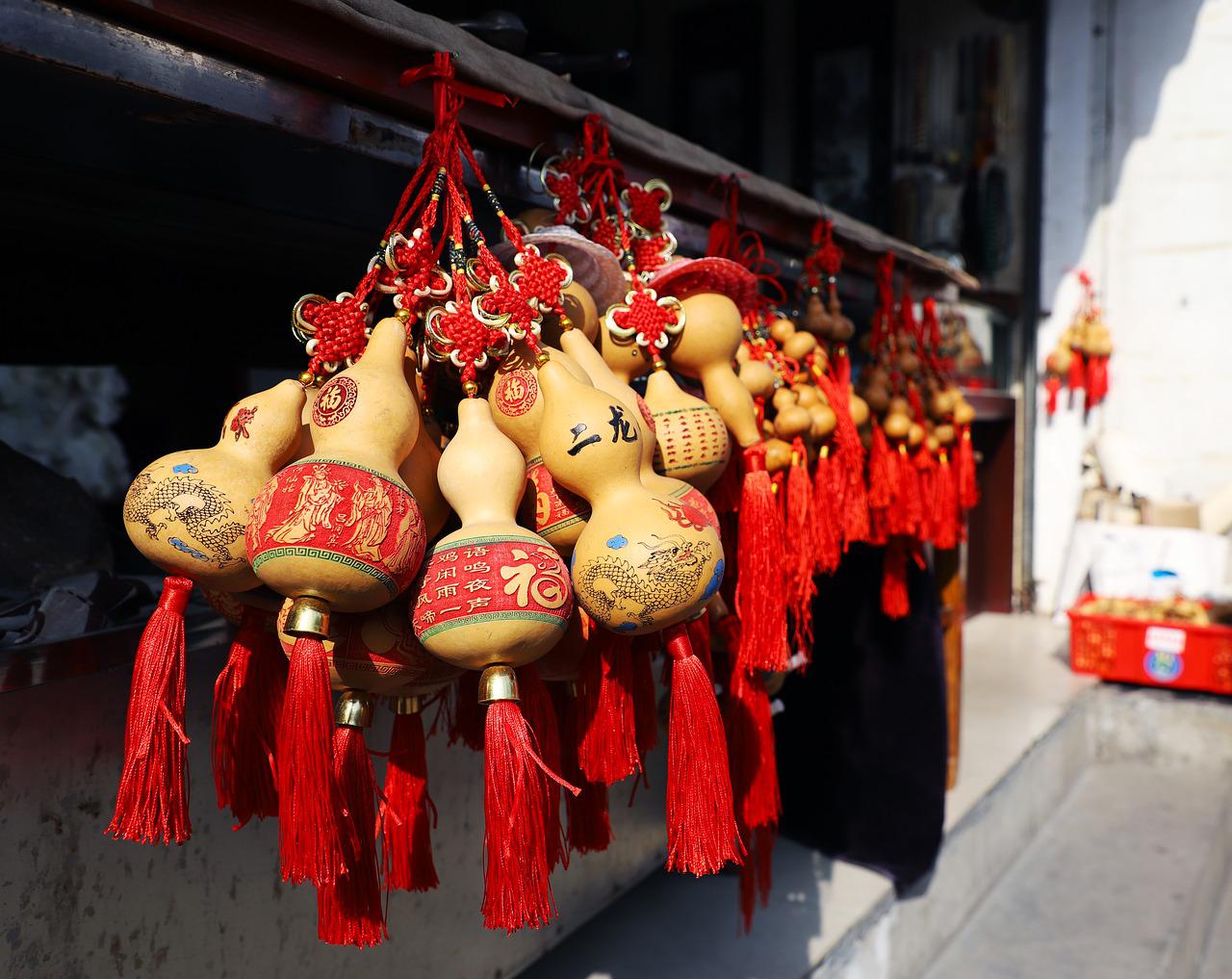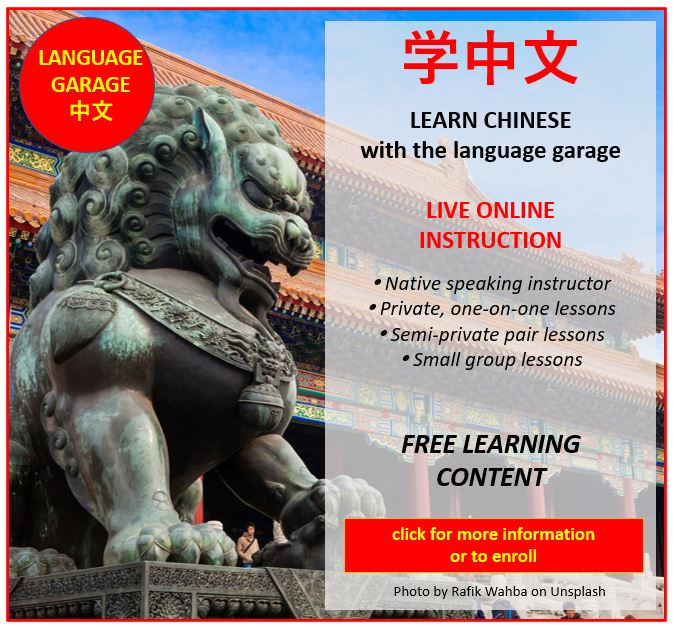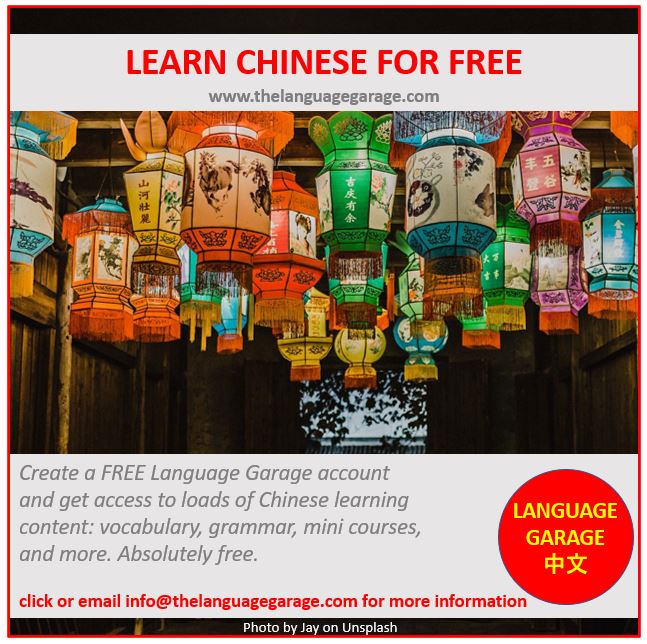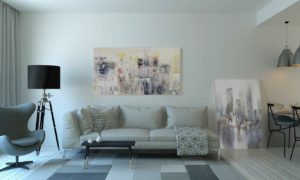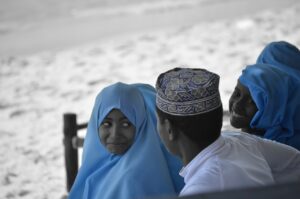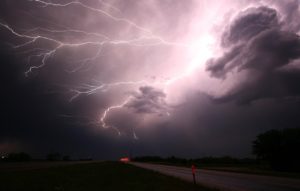Image by ACasualPenguin from Pixabay
In this post we’ll learn some basic Chinese vocabulary and grammar that you can use to describe people.
它是什么颜色?Tā shì shénme yánsè? What color is it?
Let’s start with colors: 黑色 hēi sè black; 白色 bái sè white; 红色 hóng sè red; 蓝色 lán sè blue; 黄色 huáng sè yellow; 绿色 lǜ sè green; 棕色 zōng sè brown; 灰色 huī sè gray.
- 这条狗是黑色的。
Zhè tiáo gǒu shì hēi sè de.
The dog is black. - 这只猫是白色的。
Zhè zhī māo shì bái sè de.
The cat is white. - 我们的车是蓝色的。
Wǒ men de chē shì lán sè de.
Our car is blue. - 中国国旗是红色的。
Zhōngguó guóqí shì hóngsè de.
The Chinese flag is red.
GRAMMAR TIP! When talking about color in Chinese, there are two typical constructions that you can use. First, you can simply use COLOR + NOUN:
- 一条黑狗 yītiáo hēi gǒu a black dog
- 红车 hóng chē a red car
- 白衬衫 bái chènshān a white shirt
Second, you can use the construction COLOR + 色 sè + 的 de + NOUN:
- 红色的书 hóngsè de shū red book
- 一辆灰色的车 yī liàng huīsè de chē a gray car
In a sentence where the color is used predicatively, in other words after is in English, the typical pattern is SUBJECT + 是 shì + COLOR +色 sè + 的 de.
- 书是红色的。
Shū shì hóngsè de.
The book is red. - 车是白色的。
Chē shì báisè de.
The car is white.
很好! Hěn hǎo! Very good!
Now let’s look at several other important basic adjectives: 好 hǎo good; 不好/糟糕 bù hǎo / zāo gāo bad; 大 dà big; 小 xiǎo small; 漂亮 piàoliang beautiful; 难看 nánkàn ugly; 旧 jiù old; 新 xīn new; 长 cháng long; 短 duǎn short; 高 gāo high; 低 dī low; 空的 kōng de empty; 满的 mǎn de full; 宽 kuān wide; 窄 zhǎi narrow; 硬 yìng hard; 软 ruǎn soft; 难 nán difficult; 容易 róng yì easy.
- 这家餐馆不错/不好吃。
Zhè jiā cān guǎn bú cuò / bù hào chī.
This restaurant is good/bad. - 这是一家不错的餐厅。
Zhè shì yījiā bùcuò de cāntīng.
It’s a good restaurant. - 这是一本好书。
Zhè shì yī běn hǎo shū.
This is a good book. - 这个电影很老/是新出的。
Zhè gè diàn yǐng hěn lǎo / shì xīn chū de.
The film is old/new. - 这个城市很漂亮/很大。
Zhè gè chéng shì hěn piào liang / hěn dà.
The city is beautiful/big. - 这条街很宽/很窄。
Zhè tiáo jiē hěn kuān / hěn zhǎi.
The street is wide/narrow. - 这张床很硬/很软。
Zhè zhāng chuáng hěn yìng / hěn ruǎn.
The bed is hard/soft. - 这个玻璃杯是满的/空的。
Zhè gè bó li bēi shì mǎn de / kōng de.
The glass is full/empty.
GRAMMAR TIP! Remember that when you form a sentence of the type “NOUN is ADJECTIVE,” you typically link the adjective to the noun with 很 hěn, which is meaningless and only serves as a linker.
- 这张床很硬。
Zhè zhāng chuáng hěn yìng.
The bed is hard. - 这房子很大。
Zhè fángzi hěn dà.
The house is big.
If the adjective comes right before the noun, there are two typical patterns that you’ll see. With monosyllabic adjectives, you can simply put the adjective right before the noun, much as in English.
- 硬床 yìng chuáng a hard bed
- 大房子 dà fángzi a big house
If the adjective is longer than one syllable, or if you modify it with something like 很 hěn or 非常 fēicháng (very), then you need a different linker, 的 de:
- 漂亮的房子 piāoliàng de fángzi a pretty house
- 很大的房子 hěn dà de fángzi a very big house
- 非常柔软的床 fēicháng róuruǎn de chuáng a very soft bed
Do you want to learn Chinese?
Check out our other posts on Chinese language, culture, and more. And if you’re looking for convenient and affordable live Chinese lessons with a real teacher, check out The Language Garage. Our lessons are given online in a virtual classroom, so it doesn’t matter where you live or work – we can come to you. And we have flexible options, with a free trial so that you can decide if there’s a fit. Check us out!
